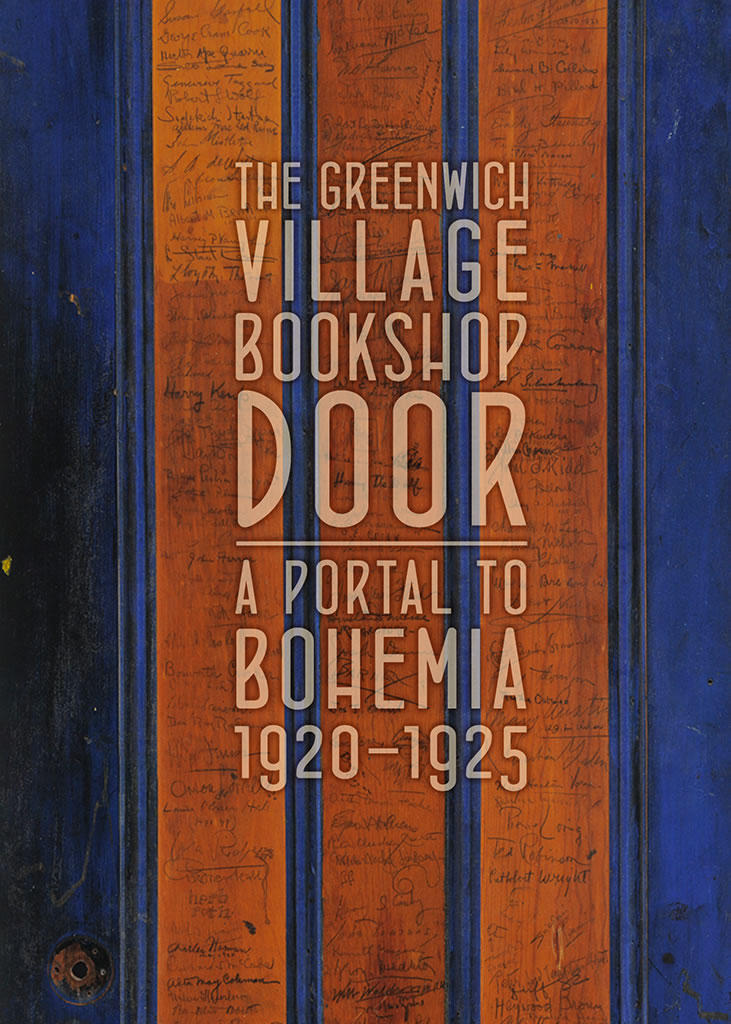The Greenwich Village Bookshop Door
A Portal to Bohemia, 1920-1925
September 6, 2011 – January 22, 2012
"Frank Shay... is on good terms with all the prominent writers, artists, sculptors, etc., with all of the mighty who live in or come into the village on a visit. Most everyone visits his shop to have a look at his queer door, whose panels are white pine strips on which are the signatures of many of the best known artists, sculptors, writers, and actors in America."
—"Magazines are Published by Greenwich Artists" in The Oregonian, March 26, 1922
In the early 1920s, noteworthy visitors to Frank Shay's Bookshop at 4 Christopher Street began autographing the narrow door that opened into the shop's office. Signed by over 240 artists, writers, publishers, and other notable habitués of New York City's Greenwich Village neighborhood, this unusual artifact is a literal portal to the past, revealing the rich mix of innovators—from anarchist poets to major commercial publishers—that defined this slice of Bohemia from 1920 to 1925.
The shop was a haunt of legendary figures. Novelists Upton Sinclair and John Dos Passos browsed alongside artists John Sloan and James Earle Fraser. Poets Edwin Arlington Robinson and Vachel Lindsay rubbed elbows with publishers Thomas Seltzer and John Farrar. Playwright Susan Glaspell and Theatre Guild founder Lawrence Langner crossed paths with Algonquin Round Table members Donald Ogden Stewart and Heywood Broun.
Like many Village businesses, the shop was as much an intellectual and social enterprise as a commercial one. Founder Frank Shay not only ran the shop, he also published a newspaper, books, and a poetry magazine from the same address. The shop stocked publications that mirrored its range of customers: socialist little magazines and commercial weeklies, avant-garde poetry and best-selling novels, children's picture books and the latest censored shocker.
Well-known in its day, the shop survives only as a footnote in the Village's layered history. The door arrived at the Ransom Center with scant documentation, and no archive documenting the shop's workings. This exhibition reconstructs this ephemeral business and its influential community through items from across the Center's collections, demonstrating how a single artifact can transform our understanding of a moment in cultural history.
The exhibition's first section, Reconstructing the Bookshop, tells the story of Shay, his business, and the Village community of the early 1920s. Next, artifacts from the archive of writer and customer Christopher Morley provide essential evidence of the shop's history. Deciphering the Door explains how curators identified 189 of the 240 signatures. The exhibition concludes with Autograph Communities, highlighting some of the most interesting names and communities represented on the door. Throughout the exhibition, labels list the signatures associated with each artifact, more than eighty names in all.


